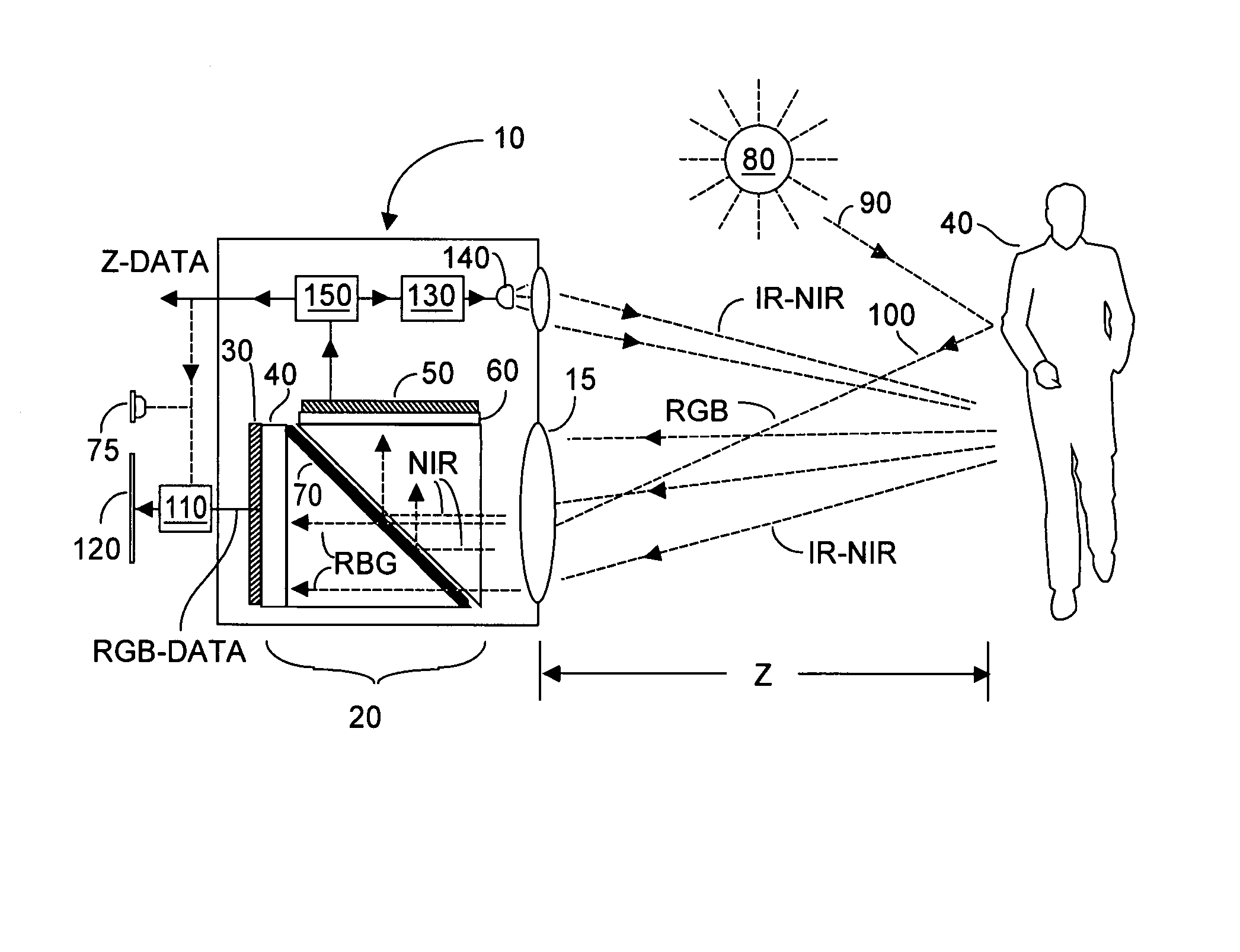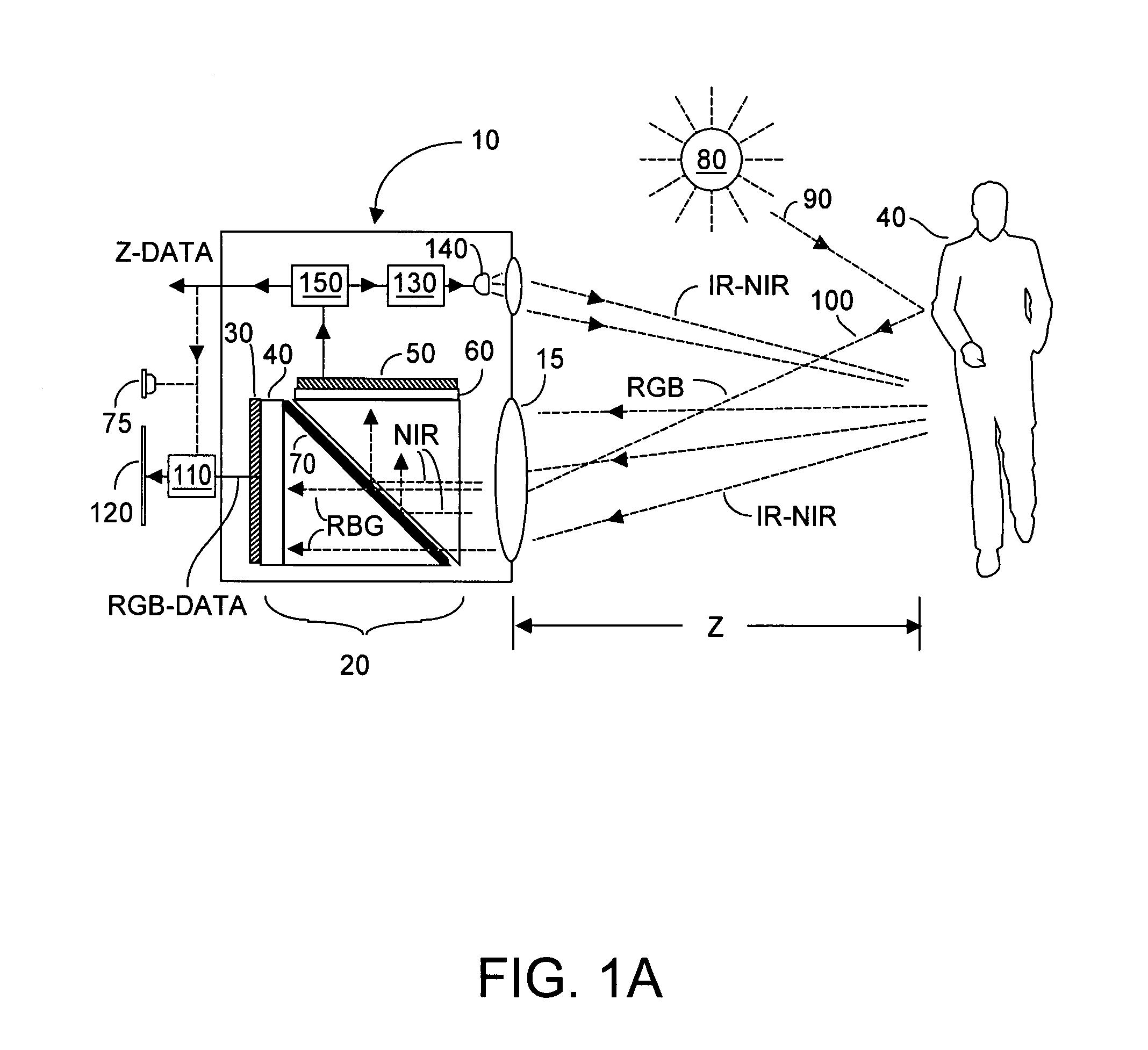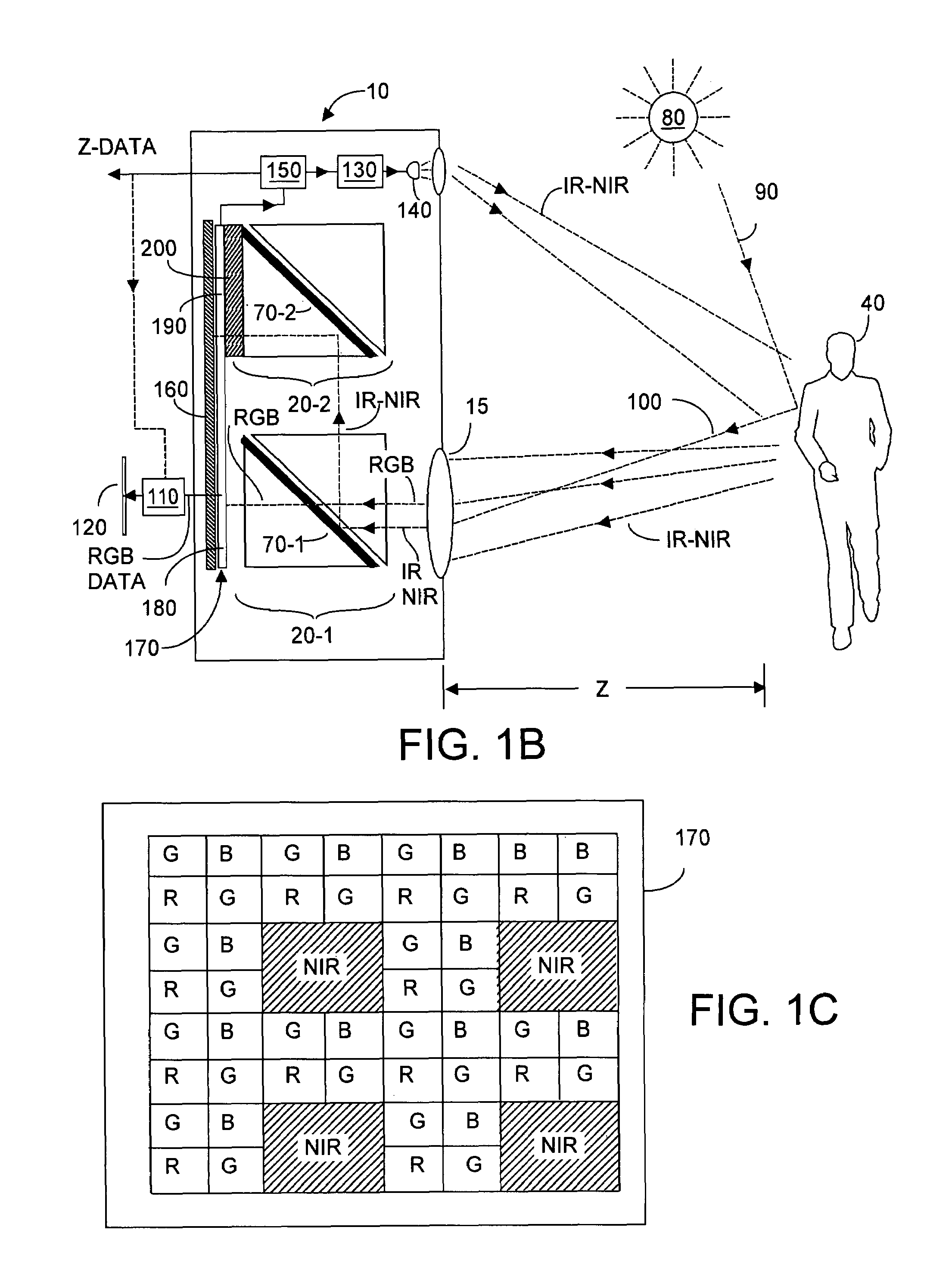RGBZ (red, green, blue, z-depth) filter system usable with sensor systems, including sensor systems with synthetic mirror enhanced three-dimensional imaging
- Summary
- Abstract
- Description
- Claims
- Application Information
AI Technical Summary
Benefits of technology
Problems solved by technology
Method used
Image
Examples
Embodiment Construction
[0038]In one aspect, embodiments of the present invention provide a method and system for implementing an RGB-Z imaging system having a global optical path common to R, G, B, and Z pixels. The resultant RGB-Z imaging system preferably uses dye filters on a per-pixel basis, but sharpens the band pass for the Z (or IR-NIR) pixels by providing an interference filter in the global optical path. Preferably the dye filters are constructed using standard CMOS fabrication directly on the individual R, G, B, or Z pixels.
[0039]As noted, if problems associated with implementing a narrow band pass for IR-NIR wavelengths can be overcome, it is desirable to use dye filters in an RGB-Z imaging system that includes color RGB pixels, and NIR-IR Z-pixels. Preferably dye-type filters are provided for RGB pixels intended to respond to red, to green, or to blue wavelengths, as well as a dye-type filter for the NIR-IR spectra. For example, red, green, and blue dye filters might have respective pass bands...
PUM
 Login to View More
Login to View More Abstract
Description
Claims
Application Information
 Login to View More
Login to View More - R&D
- Intellectual Property
- Life Sciences
- Materials
- Tech Scout
- Unparalleled Data Quality
- Higher Quality Content
- 60% Fewer Hallucinations
Browse by: Latest US Patents, China's latest patents, Technical Efficacy Thesaurus, Application Domain, Technology Topic, Popular Technical Reports.
© 2025 PatSnap. All rights reserved.Legal|Privacy policy|Modern Slavery Act Transparency Statement|Sitemap|About US| Contact US: help@patsnap.com



